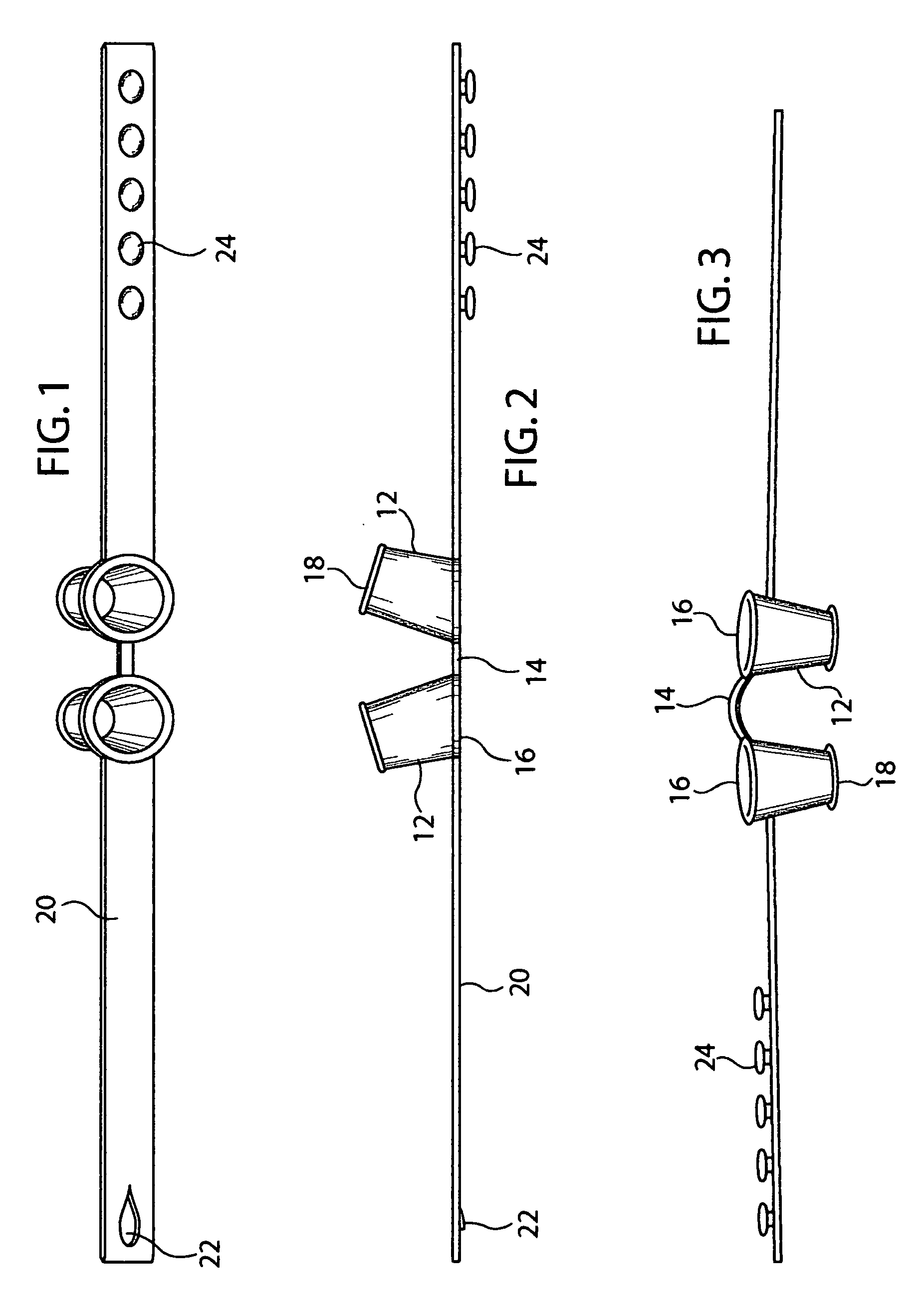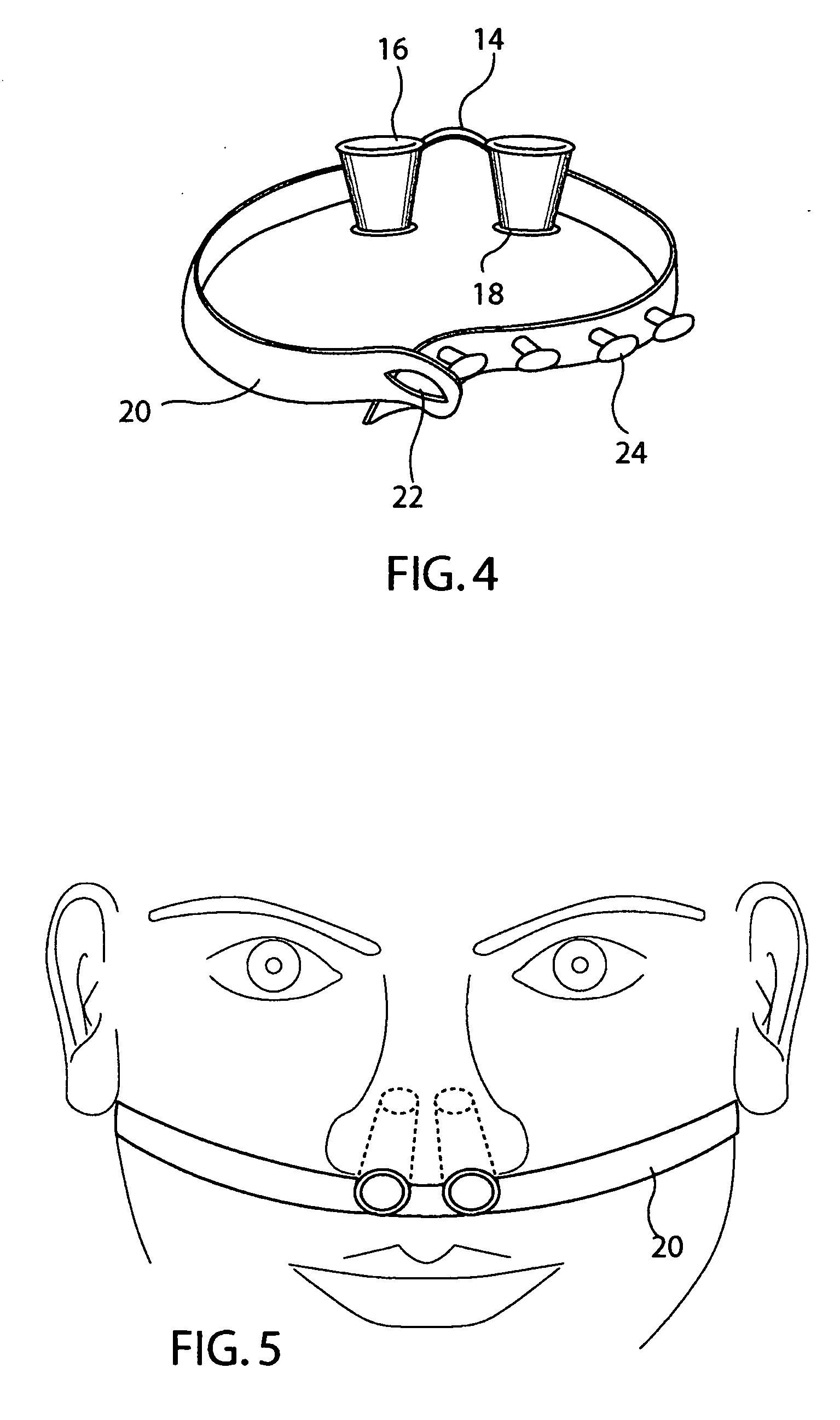Free breathing apparatus
a free breathing and apparatus technology, applied in the field of nasal breathing assist devices, can solve the problems of increasing discomfort and loosening of the tubular elements
- Summary
- Abstract
- Description
- Claims
- Application Information
AI Technical Summary
Benefits of technology
Problems solved by technology
Method used
Image
Examples
Embodiment Construction
[0022] As illustrated in the drawings, and particularly in FIGS. 15 and 16, the free breathing apparatus of the invention 10 includes a pair of open-ended tubular elements 12 connected together at an obtuse angle by a bridge element 14. As with the Santin nasal breathing assist devices, the tubular elements 12 are generally circular in cross-section and extend at this obtuse angle along their respective tube axes from first ends 16 to second ends 18. As shown in FIG. 11, the tubular elements taper curvilinearly upwardly from a relatively large diameter cross-section to a relatively smaller diameter cross-section between the first end 16 and the second end 18. Such upward curvilinearity will be appreciated to provide an enhanced fitting in contouring to the taper inside the user's nostrils.
[0023] The bridge element 14 will be seen to connect to the first ends 16 of each tubular element 12, to the opposite outside surfaces of which opposing portions of an adjustable strap 20 are secu...
PUM
 Login to View More
Login to View More Abstract
Description
Claims
Application Information
 Login to View More
Login to View More - R&D
- Intellectual Property
- Life Sciences
- Materials
- Tech Scout
- Unparalleled Data Quality
- Higher Quality Content
- 60% Fewer Hallucinations
Browse by: Latest US Patents, China's latest patents, Technical Efficacy Thesaurus, Application Domain, Technology Topic, Popular Technical Reports.
© 2025 PatSnap. All rights reserved.Legal|Privacy policy|Modern Slavery Act Transparency Statement|Sitemap|About US| Contact US: help@patsnap.com



